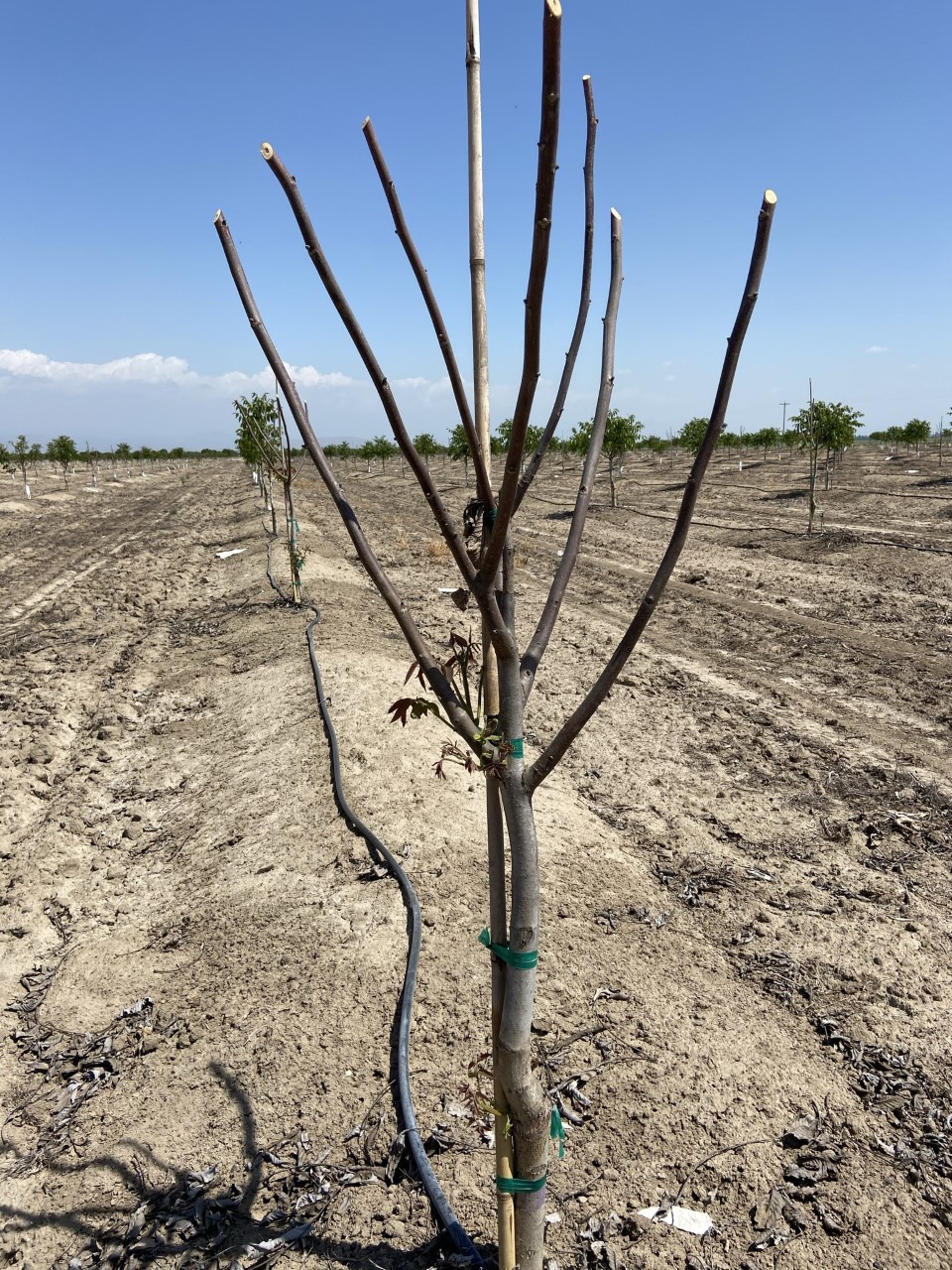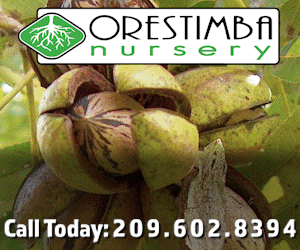
Erratic patterns of freeze damage in older walnut orchards and typical damage in young orchards over the past two fall seasons is being linked to rapid declines and swings in temperatures.
Stanislaus County Orchard Systems Advisor Kari Arnold explained in the county’s recent fruit and nut production newsletter that while green walnut tissue is highly susceptible to freeze damage, dormant walnut tissues can normally handle temperatures in the low 20s. However, she said, some orchards experienced temperature swings from 60 degrees F to -28 degrees F within short periods of time, causing damage in older orchards and in young orchards.
A slow decline in temperatures over time is needed by walnut trees to convert complex carbohydrates to simple sugars during the fall in preparation for freezing temperatures. Rapid temperature swings, Arnold said, is why it is believed the erratic damage patterns in older orchards occurs.
Brown necrotic tissues in walnuts are evidence of freeze damage when there are no signs of fungal pathogens. Dead branches are apparent at leaf-out.
Reducing new growth in the fall promotes the hardening off process in the trees that begins as daytime temperatures decline. Arnold said there is limited field-based research on freeze mitigation, but orchard observations suggest that cutting back on irrigation in September and ending nitrogen applications in August slows growth and promotes hardening off in mature trees.
In young orchards, irrigation should cease in September to set the terminal bud and harden off the trees. Irrigation can begin later if no rain has fallen to prevent stress. Having the orchard soil moist in November should keep the ground warmer and allows for heat storage on warm days. Hydrated trees are less susceptible to freeze damage.
UCCE Farm Advisor Elizabeth Fichtner noted in a Tulare County newsletter that research studies conducted by UCCE Specialist Bruce Lampinen showed that painting tree trunks and shoots with diluted white interior latex paint after leaf fall will reduce the extent of temperature fluctuations at the plant surface, particularly on the southwest side of the tree.
Studies conducted by Wilbur Reil, farm advisor emeritus, demonstrated that application of the paint after a freeze event can still mitigate the damage.












